Gaudí playing cards
Gaudí playing cards with photography by Ramon Manent, Spain, 2002.
Published by Heraclio Fournier in 2002, this is another pack devoted to the Catalan architect Antoni Gaudí (1852-1926). Unlike the earlier Gaudí Poker, the cards display photographs by Ramon Manent (b. 1948), who specialises in portraying Catalan art and architecture of the Romanesque, Gothic and especially the Modernista periods. Manent is famed for his photos of works by Gaudí, showcasing their forms, textures and colours. His images of the architect’s oeuvre demonstrate his mastery at capturing the object, light and space. See the box►
The cards have decorative borders within which is a photograph of a particular building or a specific feature or aspect of one of Gaudí’s masterpieces. There are three additional cards providing information about the artist, in Spanish, French and English►
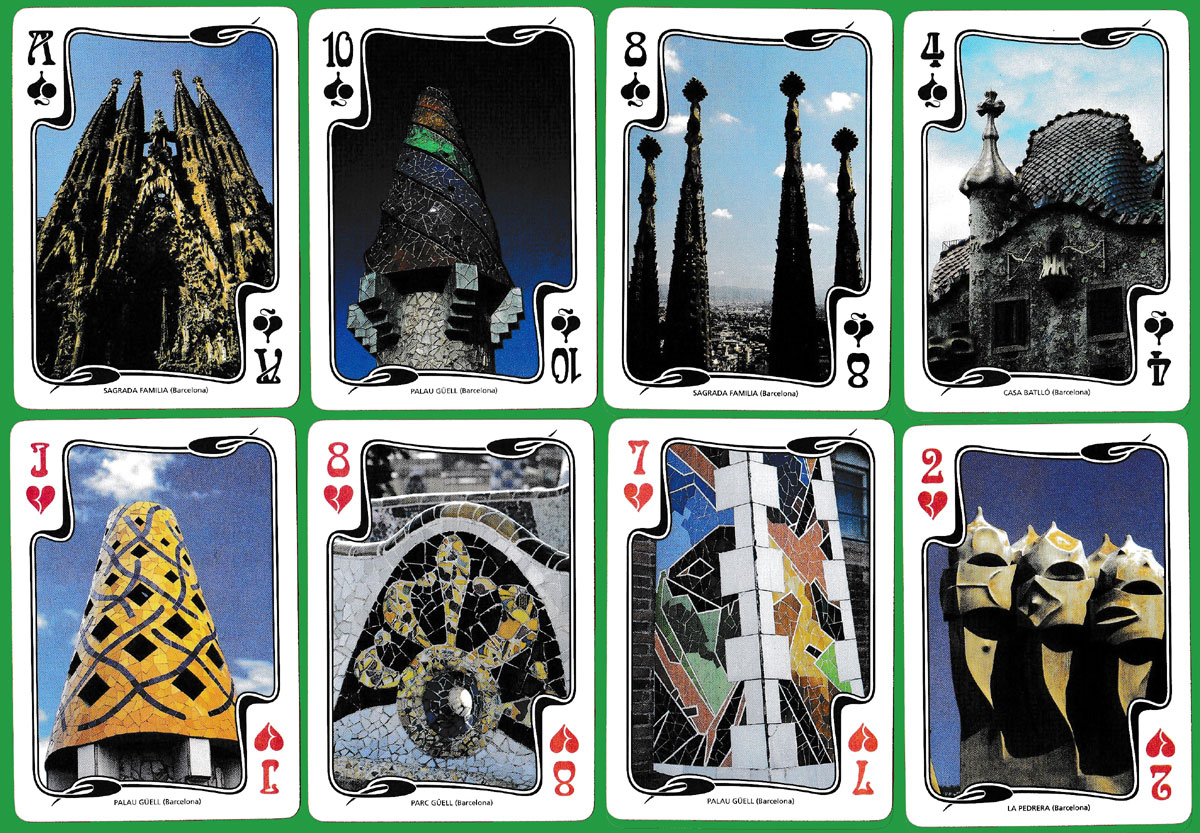
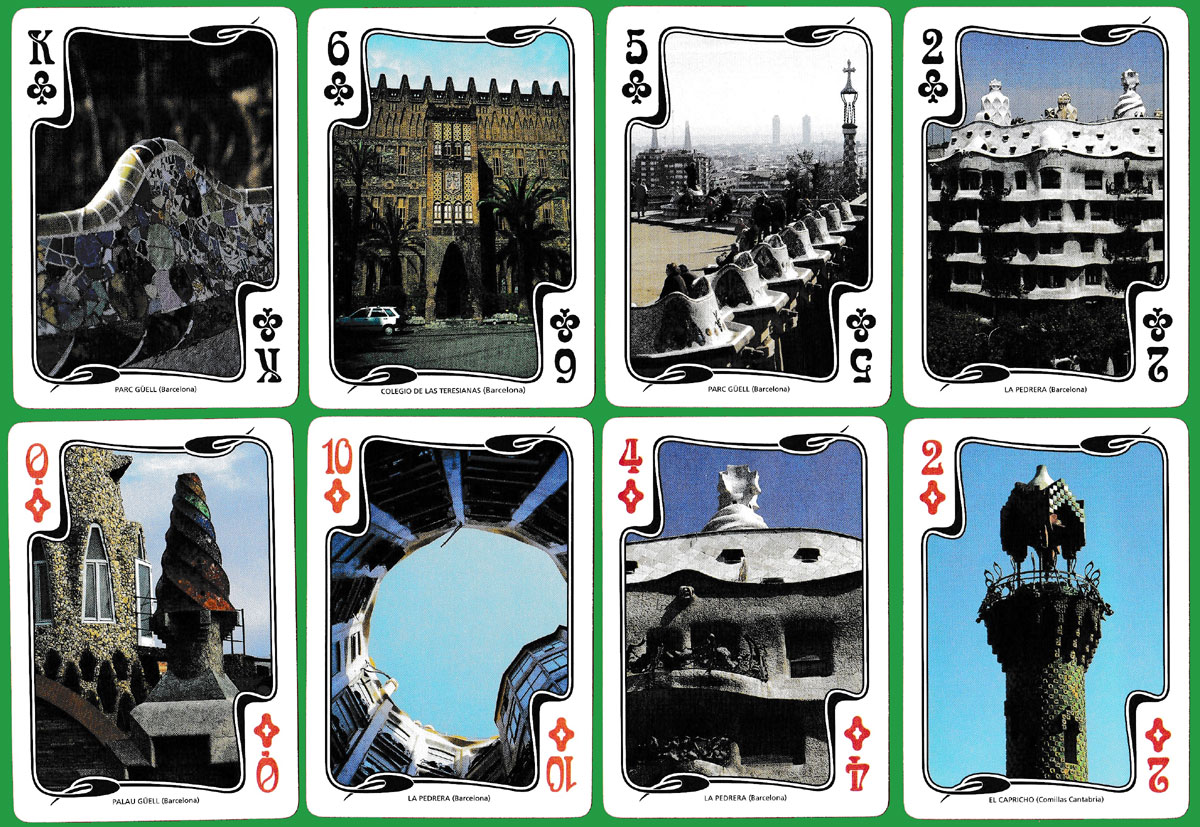
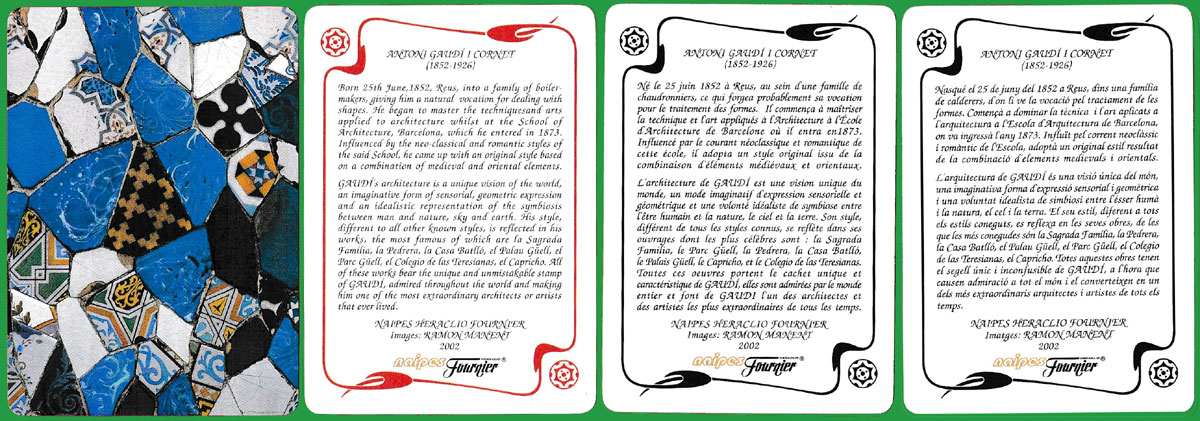
Above: Gaudí playing cards published by Heraclio Fournier, Spain, 2002.
By Peter Burnett
United Kingdom • Member since July 27, 2022 • Contact
I graduated in Russian and East European Studies from Birmingham University in 1969. It was as an undergraduate in Moscow in 1968 that I stumbled upon my first 3 packs of “unusual” playing cards which fired my curiosity and thence my life-long interest. I began researching and collecting cards in the early 1970s, since when I’ve acquired over 3,330 packs of non-standard cards, mainly from North America, UK and Western Europe, and of course from Russia and the former communist countries.
Following my retirement from the Bodleian Library in Dec. 2007 I took up a new role as Head of Library Development at the International Network for the Availability of Scientific Publications (INASP) to support library development in low-income countries. This work necessitated regular training visits to many sub-Saharan African countries and also further afield, to Vietnam, Nepal and Bangladesh – all of which provided rich opportunities to further expand my playing card collection.
Since 2019 I’ve been working part-time in the Bodleian Library where I’ve been cataloguing the bequest of the late Donald Welsh, founder of the English Playing Card Society.

Related Articles
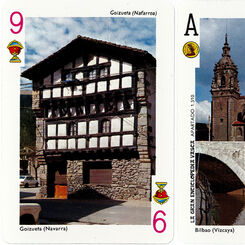
Baraja Turística del País Vasco
Basque poker deck of 55 cards published by Fournier with scenic views of the Basque Country.

Monuments de Paris
‘Monuments de Paris’ souvenir playing cards produced by Heraclio Fournier, c.1964.
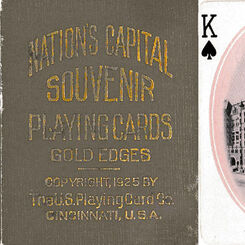
Nation’s capital souvenir playing cards
Nation’s capital souvenir playing cards published by the United States Playing Card Company, USA, 19...
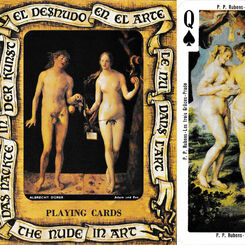
El Desnudo en el Arte
The Nude in Art / El Desnudo en el Arte, Spain, 1977 (reprint 1990)

Baraja Fiesta Taurina
‘Baraja Fiesta Taurina’ bullfight playing cards published by Heraclio Fournier, Spain, 1975.
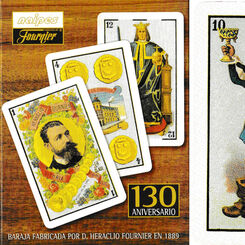
Naipes Heraclio Fournier 130th Anniversary
Baraja conmemorativa del 130 aniversario de naipes Heraclio Fournier (1868-1998) Spain, 1998.
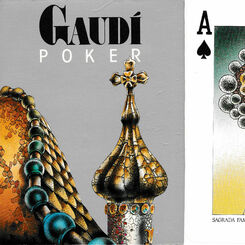
Gaudí poker
Gaudí poker playing cards illustrated by Josep Opisso, Spain, c. 1992.

Icelandic picture playing cards / Islensku landslagsspilin
Icelandic picture playing cards with photography by Gudmundur Ingólfsson.

Rasta playing cards
Rasta playing cards celebrating the Rastafari religion.

Baraja El Quijote
Baraja El Quijote, facsimile of original deck designed by E. Pastor, reprinted by Naipes Heraclio Fo...
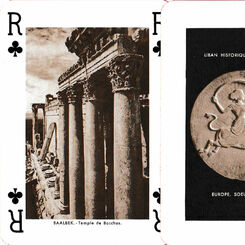
Liban Historique et Touristique
“Liban historique et touristique” souvenir of Lebanon playing cards manufactured by Heraclio Fournie...

Maldives pictorial playing cards
Maldives pictorial souvenir playing cards produced by Fantasy, of Malé, Maldives, 1993.

Souvenir of Panama
A photographic souvenir of Panama consisting of 52 cards and 2 jokers.
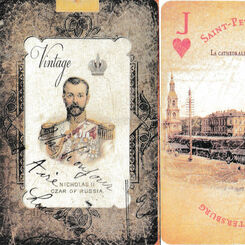
Saint Petersburg vintage playing cards
Saint Petersburg vintage photography playing cards.

52 Faces of Nepal playing cards
52 Faces of Nepal playing cards produced by Himalayan MapHouse, Kathmandu.
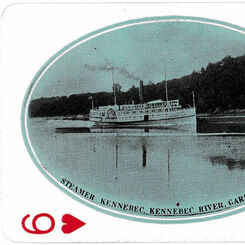
Maine Souvenir playing cards
Maine the Pine Tree State souvenir playing cards, 1900.

Bhutan, Land of the Thunder Dragon
Bhutan, Land of the Thunder Dragon: 52 pictures of Bhutan published by Knowledgecards.

Baraja Turística de España
Baraja Turística de España by Heraclio Fournier, 1966.

East African Playing Cards
East African Playing Cards by Heraclio Fournier S.A., 1957.
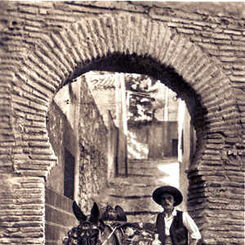
Monumentos de España
"Monumentos de España" souvenir playing cards manufactured by Heraclio Fournier, S.A., Vitoria (Spai...
Most Popular
Our top articles from the past 60 days






















